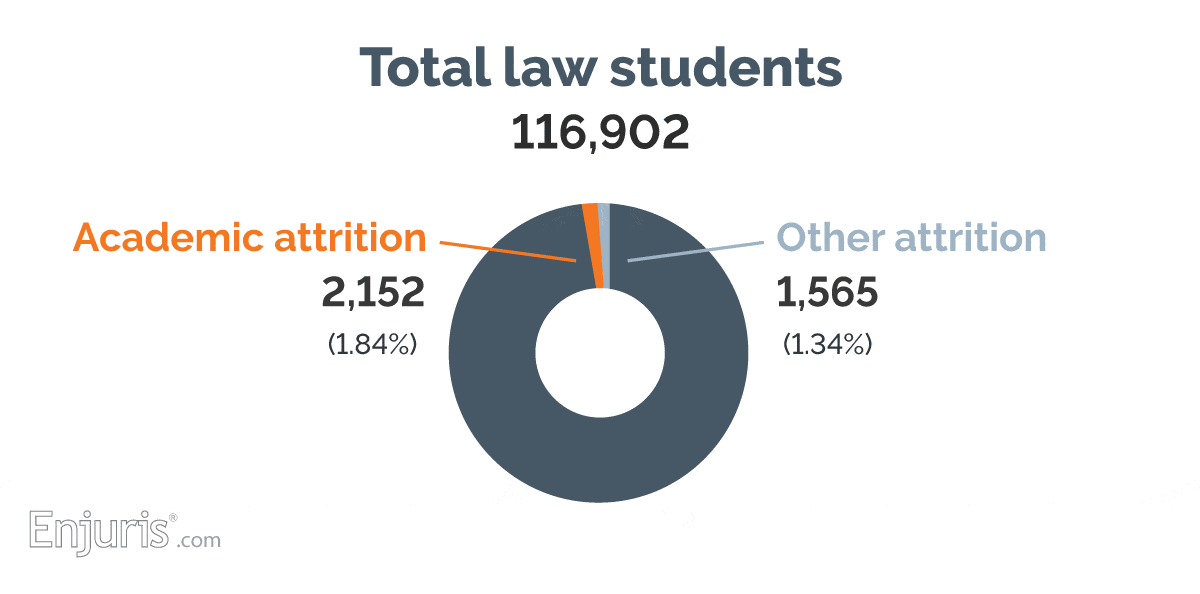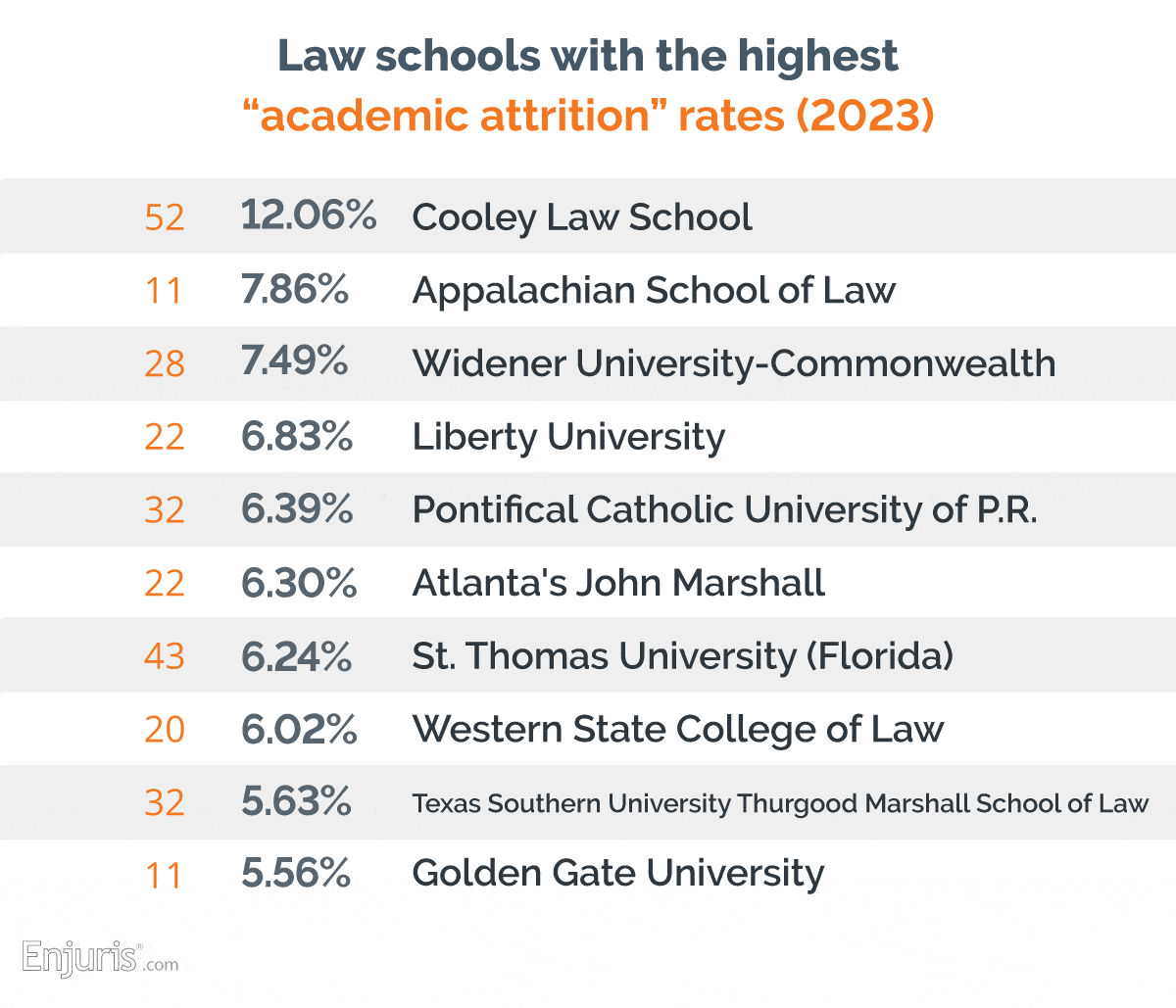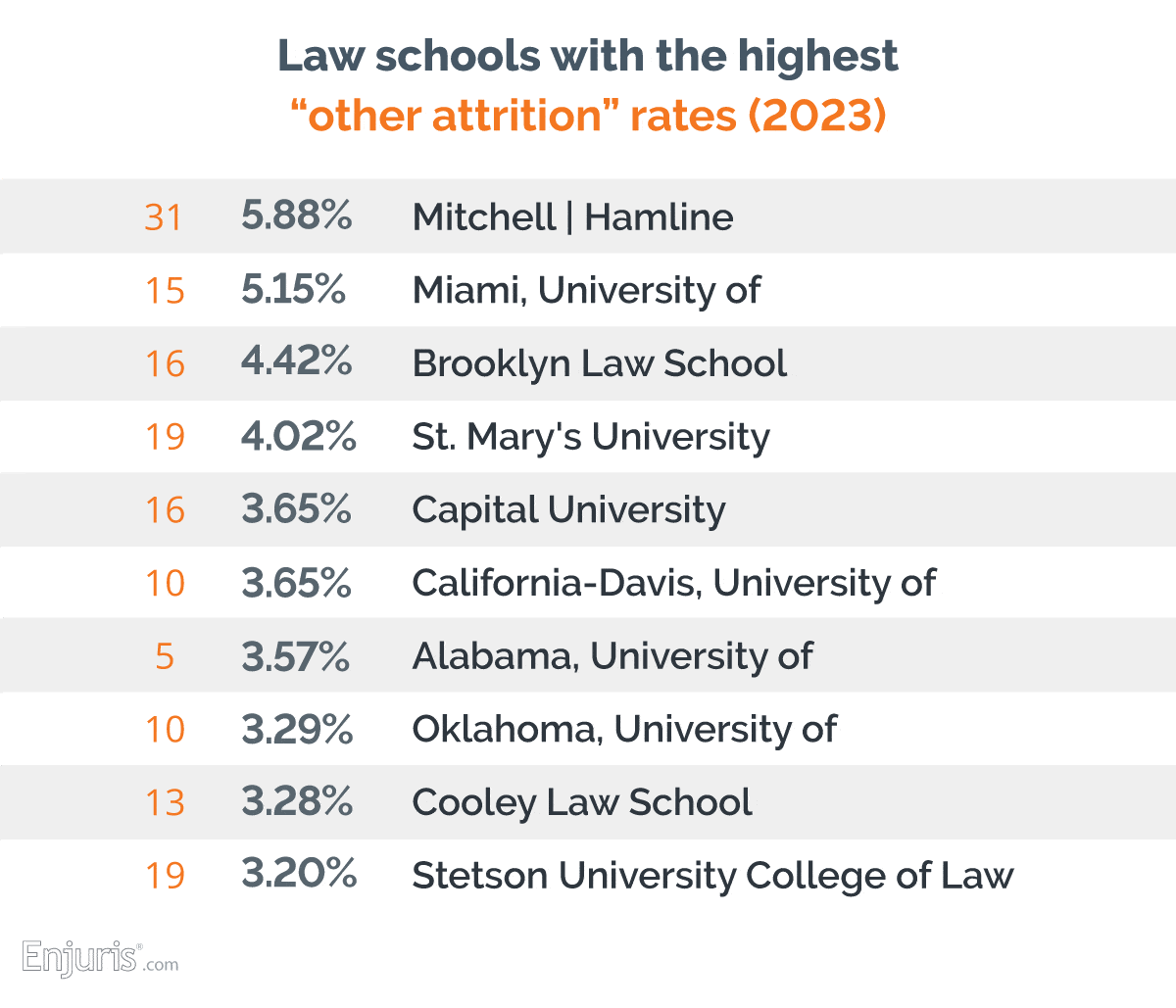
How race and ethnicity play a role in law school attrition
The 2023 law school attrition rate was 3.8 percent, varying across demographics and institutions. This article delves into the types of attrition, the schools with the highest rates, and the impact of these rates on student choices and institutional policies.
In 2023, the collective attrition rate across all law schools was 3.8 percent, underscoring a significant yet frequently underestimated factor in the assessment of legal education.
Attrition—the rate at which students discontinue their studies before graduating—does not occur uniformly across all demographics and institutions; certain racial groups and law schools experience significantly higher attrition rates than others.
Understanding these disparities is essential for prospective law students, as they may reflect broader issues within the legal education system.
What is attrition?
The American Bar Association requires all ABA-accredited law schools to report two types of attrition annually:
- Academic attrition: Academic attrition refers to the departure of students from a law school due to their inability to meet the academic standards set by the institution. More specifically, it refers to students who have either been dismissed because they failed to satisfy the law school’s minimum progress standards or voluntarily left the school while their grade point average (GPA) was below the threshold required for maintaining good academic standing.
- Other attrition: Other attrition refers to students who leave law school for reasons that do not pertain to academic performance. This category excludes students who transfer to other institutions and students on a leave of absence lasting one year or less.
Overview of 2023 law school attrition rates
In 2023, a total of 116,902 students were enrolled in ABA-approved law schools across the United States. However, not all of these students stayed the course; 3,717 students discontinued their studies and left law school.
Here is a more detailed breakdown of the attrition rate:

Identifying law schools with high attrition rates
While several law schools successfully retained all their students in 2023, others faced significant challenges in student retention. Here is a look at the ten law schools with the highest rates of both academic and other forms of attrition in 2023.


Attrition by race and ethnicity
Black law students faced the highest rate of attrition at 3.06 percent, followed closely by Native American or Alaskan Native students at 2.53 percent. Hispanic students also experienced a notable academic attrition rate of 2.06%. Comparatively, white students had the lowest academic attrition rate at 0.79 percent.
Law school “academic attrition” rates by race and ethnicity (2023)
| Race | Attriters | Percentage |
|---|---|---|
| Hispanic | 328 | 2.06% |
| American Indian or Alaskan Native | 13 | 2.53% |
| Asian | 95 | 1.10% |
| Black | 279 | 3.06% |
| Native | 4 | 3.54% |
| Two or more | 43 | 0.86% |
| POC | 780 | 1.99% |
| White | 551 | 0.79% |
When considering other forms of attrition, the trend shifts slightly. Here, American Indian and Alaskan Native students exhibited the highest attrition rate at 2.34 percent, followed by Black students at 1.25 percent. White students experienced a higher rate of other attrition at 1.06 percent compared to their lower academic attrition rate.
Law school “other attrition” rates by race and ethnicity (2023)
| Race | Attrition | Percentage |
|---|---|---|
| Hispanic | 133 | 0.84% |
| American Indian or Alaskan Native | 12 | 2.34% |
| Asian | 72 | 0.83% |
| Black | 114 | 1.25% |
| Native | 1 | 0.88% |
| Two or more | 54 | 1.08% |
| POC | 386 | 0.98% |
| White | 741 | 1.06% |
The above statistics underscore the varying challenges faced by law students of different racial and ethnic backgrounds, highlighting the need for targeted support and interventions to address these disparities.
The importance of academic attrition rates
For those considering a legal education, understanding the attrition rates of potential law schools is an important part of the decision-making process.
A high academic attrition rate may suggest that the law school admits a significant number of students who ultimately find it challenging to succeed in the rigorous legal environment. This could be due to a variety of factors, including the school’s admission criteria not aligning well with the demands of its academic program. Alternatively, a high rate might reflect exceptionally stringent academic standards and requirements, suggesting that a considerable number of students are unable to meet these high benchmarks.
While 'other attrition' rates, which cover non-academic reasons for leaving law school, are more complex to interpret due to their varied and often undisclosed nature, they should not be overlooked. An elevated rate in this category could indicate potential concerns within the school's environment, such as issues related to student well-being, mental health support, or community engagement. It may also point to logistical or financial challenges faced by students. Therefore, a law school with a high “other attrition” rate may necessitate further investigation into the quality of life and support structures it offers to its students.
More Enjuris research you might like
- Law school enrollment by race & ethnicity (2023)
- Where do women go to law school? (2023)
- Law school faculty demographics (2023)
- Lawyer mental health and well being
About Enjuris®
Enjuris.com is a collection of independent legal resources designed to help people with their biggest questions following an accident or injury. Through instructive articles written by experienced attorneys, printable forms, and a free legal directory, Enjuris provides injury victims with the information and tools they need to take the next step. In keeping with its mission, Enjuris.com also provides promising college and law school students with scholarships and other resources to help them one day become effective lawyers.
Data source: American Bar Association, ABA Required Disclosures (Standard 509 Reports). Any mistakes in data reported to the ABA are the responsibility of the reporting school. Enjuris assumes no responsibility for inaccuracies or for changes in such information that may occur after publication. The figures here are as reported on December 18, 2023. Schools may update their data at any time. Please see the ABA website for up-to-date figures.
